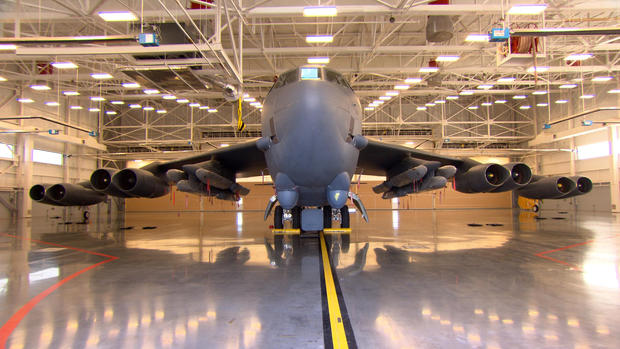Perspective on the "new Cold War"
More than 30 years ago, the Cold War was David Martin’s regular beat for CBS News. Now the correspondent returns to his old beat with a disturbing two-part 60 Minutes story on how a “new Cold War” has begun.
Martin admits he hasn’t thought much about superpowers’ nuclear arsenals since Cold War tensions thawed back in the late 1980s. When headlines turned to terrorism and wars in the Middle East, the correspondent followed suit. Returning to the topic of nuclear warfare this week on 60 Minutes, Martin reports that a nuclear attack somewhere in the world is not as unlikely as most people think.
“I came to this story comparing it to the reporting I’d done during the Cold War, and I was expecting to see something very different,” Martin said in an interview with 60 Minutes Overtime. “I was expecting a less active U.S. nuclear force, more of a standby force, and what I found was an alert force. And -- particularly since Russia invaded Crimea and since Vladimir Putin started nuclear saber-rattling -- it felt like we were back in the Cold War and that really nothing much had changed at all.”
“It felt like we were back in the Cold War and that really nothing much had changed at all.”
Martin and producer Mary Walsh got extraordinary access to America’s nuclear forces for their 60 Minutes story. The team filmed inside the bomb bay of a B-52 bomber, a nuclear submarine in the Pacific, and what’s known as the “battledeck,” an underground command center for communicating with the president in times of nuclear crisis.
The most difficult element to shoot, says Walsh, was the morning briefing for the head of the U.S. Strategic Command, Admiral Cecil Haney. That meeting, held at Strategic Command headquarters in Omaha, is classified “above top-secret,” says Walsh, and had never been filmed before.
Martin and Walsh also went aboard the USS Kentucky, a submarine capable of carrying nearly 200 nuclear warheads and whose top-secret location is a matter of national security. Filming inside the submarine, Martin and Walsh found a highly disciplined crew accustomed to speaking in hushed tones and sleeping between missile tubes which occupy approximately a third of the submarine.
At the military’s request, the 60 Minutes team took unusual precautions to help protect the location of the Kentucky as they planned logistics for filming on board. Walsh and Martin discussed details only in face-to-face meetings with the military and spoke in generalities when communicating over the phone or by email.
Walsh describes the 60 Minutes story as “The Hunt for Red October” meets “Dr. Strangelove.”
“We’ve all been fearful of the Armageddon of nuclear war,” she says. “And I think if there’s one single thing that surprised me the most in reporting this story, it is that there is a doctrine called “escalate to de-escalate.” So, if there’s a conventional war, Russia could use just one nuclear weapon, perhaps a smaller one, a “low-yield” nuclear weapon, as a way of saying, ‘Stop. We are very serious about this, and we need you to back off.’ And that’s a scenario that I had never considered.
If viewers haven’t been thinking about nukes much, they probably will after watching Martin and Walsh’s report, particularly given this year’s hotly contest presidential election.
“The one thing that stuck out for me the most,” Martin says, “which I knew back [in the 80s], but I’d never really appreciated the importance of it, is the extent to which the U.S. military goes to make sure that the president and only the president can launch nuclear weapons.”
Martin says his story served as an important reminder that “the person we elect is the person — and the only person — who can make that decision.”

